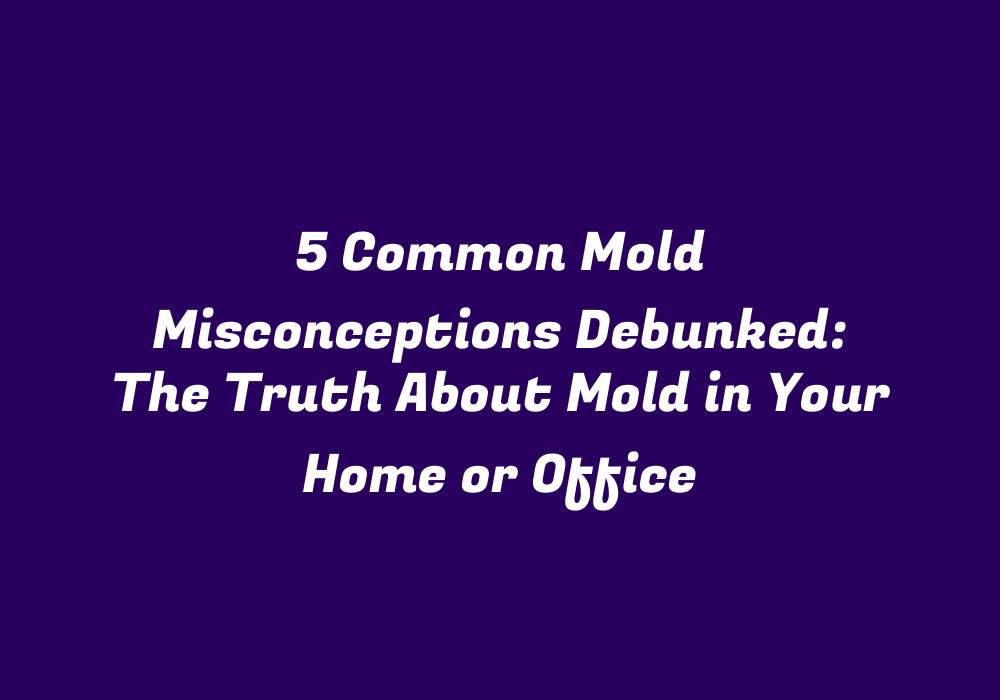Introduction
Mold is a naturally occurring fungus that thrives in damp and humid conditions. It can be found both indoors and outdoors, and while it plays an important role in the environment’s nutrient cycle, its growth inside homes and workplaces can have detrimental effects on human health and property damage. There are various misconceptions surrounding mold that may hinder appropriate response when dealing with mold-related issues. In this article, we will address and debunk five common myths about molds in residential and commercial buildings to provide a clearer understanding of the facts.
Myth 1: All Mold is Dangerous
While some types of mold are more hazardous than others, not all mold species present an equal threat. The Centers for Disease Control and Prevention (CDC) classifies mold exposure as a potential health risk, mainly due to the allergenic reactions or irritation caused by inhalation of mold spores. However, there is no single mold type that can be categorized as universally hazardous.
Myth 2: Only Visible Mold is a Concern
Even when mold growth is not visible to the naked eye, it may still exist in a home or office environment. Molds have the ability to grow behind walls, beneath carpets, and within ventilation systems where they are not easily detected. To accurately assess mold levels in a building, professional mold inspection services can sample airborne spores and inspect hidden areas with specialized equipment.
Myth 3: Bleach Effectively Eradicates Mold
While bleach is an effective cleaning agent that can remove some types of mold from non-porous surfaces, it does not eliminate the root cause or address underlying moisture issues that allow for mold growth. Furthermore, bleach may only work on surface mold but cannot penetrate deep into porous materials such as drywall and wood, which means these materials should be replaced if they exhibit mold damage.
Myth 4: Mold Growth is Only Associated with Leaks and Water Damage
While leaks and water damage are common causes of mold growth, other factors may contribute to the formation of mold in buildings. Condensation due to humidity levels that are too high can also lead to mold infestations, even without direct contact with water sources. It is crucial to identify and address these non-water damage sources for effective mold management.
Myth 5: Mold Remediation is a One-Time Process
Mold remediation involves the removal of mold growth, as well as addressing the underlying moisture issues that lead to its development. However, it is important to note that this process may not be a one-time event. Constant vigilance and maintenance are required to prevent recurring mold growth in the long term. This can involve regularly checking for signs of dampness or mold, maintaining appropriate humidity levels, and addressing any new water damage issues promptly.
Conclusion
Mold is a complex issue that requires proper understanding of its nature, causes, and potential risks to maintain a healthy living or working environment. Dispelling common misconceptions surrounding mold is an essential first step towards effectively managing the problem. By acknowledging the facts about mold growth and remediation, building owners can protect their properties from damage and safeguard occupants’ health.
